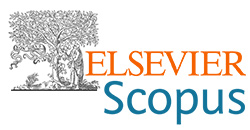Role of artificial intelligence (AI) and machine learning (ML) in the corrosion monitoring processes
DOI:
https://doi.org/10.62638/ZasMat1192Abstract
When it comes to the upkeep of engineering structures in a variety of industries, corrosion monitoring systems are an extremely important components. In particular, applications such as storage tanks for hazardous chemicals and weight-bearing structures of large engineering constructions are at the forefront of providing attention to relevance. This is due to the fact that failures experienced by these applications can potentially result in catastrophic consequences. As a result, contemporary methods make use of the application of concepts connected with machine learning and artificial intelligence in order to efficiently monitor and identify corrosion related damages. As a consequence of this, the monitoring system is able to provide the control of the industrial structures with minute-by-minute updates. Therefore, the catastrophe is prevented to a significant degree, and there is a significant possibility of lowering the costs associated with technical procedures that require maintenance. Within the scope of this paper, a comprehensive analysis is conducted on the applications of artificial intelligence and machine learning techniques that are utilized in corrosion monitoring systems across a wide range of industries. Through this assessment, the solutions and efficient corrosion monitoring methods that are specific to the domains made available. Consequently, the purpose of this work is to determine the appropriate technique of monitoring systems for each and every corrosion-related disorder.
Keywords:
Artificial Intelligence, machine learning, corrosion monitoring system, oil and gas industriesReferences
J. Lucey, A. Fathi, M. Mazari (2019) Predicting Pavement Roughness as a Performance Indicator Using Historical Data and Artificial Intelligence. International Airfield and Highway Pavements Conference, 10-18,
https://doi.org/10.1061/9780784482476.002.
M. Esmaeili-Falak, H. Katebi, M. Vadiati, J. Adamowski (2019) Predicting Triaxial Compressive Strength and Young’s Modulus of Frozen Sand Using Artificial Intelligence Methods. Journal of Cold Regions Engineering, 33, 04019007, https://doi. org/10.1061/(ASCE)CR.1943-5495.0000188.
R.Tavakoli, A. Sharifara, M. Najafi (2020) Artificial Neural Networks and Adaptive Neuro-Fuzzy Models to Predict Remaining Useful Life of Water Pipelines. World Environmental and Water Resources Congress conference, 191-204,
https://doi.org/10.1061/9780784482988.019.
D. Young, K. Panthi, O. Noor (2021) Challenges involved in adopting BIM on the construction jobsite. EPiC Series in Built Environment, 2(3), 302-310, https://doi.org/10.29007/f8r3.
J. M. Davila Delgado, L. Oyedele (2021) Digital Twins for the built environment: learning from conceptual and process models in manufacturing. Advanced Engineering Informatics, 49, 101332, https://doi.org/10.1016/j.aei.2021.101332.
W. Shang, B. Chen, X. Shi, Y. Chen, X. Xiao (2009) Electrochemical corrosion behavior of composite MAO/sol–gel coatings on magnesium alloy AZ91D using combined micro-arc oxidation and sol–gel technique. Journal of Alloys and Compounds, 474, 541-545, https://doi.org/10.1016/j.jallcom.2008.06.135.
A. Kahyarian, B. Brown, S. Nesic (2017) Electrochemistry of CO2 corrosion of mild steel: Effect of CO2 on iron dissolution reaction. Corrosion Science, 129, 146-151, https://doi.org/10.1016/ j.corsci.2017.10.005.
S. Zhang, T. Zhang, Y. He, Y. Feng, X. Du, B. Ma, T. Zhang (2019) Effect of coastal atmospheric corrosion on fatigue properties of 2024-T4 aluminum alloy structures, Journal of Alloys and Compounds, 802, 511-521, https://doi.org/10. 1016/j.jallcom.2019.06.235.
H. Liu, Y. Ding, Z. Chen (2017) Static stability behaviour of aluminium alloy single-layer spherical latticed shell structure with Temcor joints, Thin-Walled Structures,120, 355-365, https://doi.org/10. 1016/j.tws.2017.09.019.
B. Dikici, R. Tuntas (2021) An artificial neural network (ANN) solution to the prediction of age-hardening and corrosion behavior of an Al/TiC functional gradient material (FGM). Journal of Composite Materials, 55(2), 303-317, https://doi.org/10.1177/0021998320948945
T. Aditiyawarman, J. Wahyuadi, A. Kaban, S. Suryadi, H. Rahmadani, R. Riastuti, (2023) Integrating the root cause analysis to machine learning interpretation for predicting future failure. Heliyon, 9, e16946, https://doi.org/10.1016/j.heliyon. 2023.e16946.
T. Okura, N. Kasai, H. Minowa, S. Okazaki (2022) Application of Machine Learning for Data with an Atmospheric Corrosion Monitoring Sensor Based on Strain Measurements. Metals, 12, 1179, https://doi.org/10.3390/met12071179.
H. Fei, Z. Hu (2022) Corrosion Detection of Structural Reinforcement Based on Artificial Intelligence Technology. Journal of Physics: Confe¬rence Series, 2152, 012041, https://doi.org/ 10.1088/1742-6596/2152/1/012041.
J. Uruchurtu, J. Malo, J.A Perez (2012) Artificial Intelligence for the Assessment on the Corrosion Conditions Diagnosis of Transmission Line Tower Foundations. Recent Patents on Corrosion Science, 2012, 98-111,
https://doi.org/10.2174/2210683911202020098.
R. Wasif, M.O.Tokhi, J. Rudlin, G. Shirkoohi, F. Duan (2023) Reliability Improvement of Magnetic Corrosion Monitor for Long-Term Applications. Sensors, 23, 2212,
https://doi.org/10.3390/s23042212.
L. Petricca, T. Moss, G. Figueroa, S. Broen (2016) Corrosion Detection Using A.I: A Comparison of Standard Computer Vision Techniques and Deep Learning Model. Computer Science & Information Technology, 6, 91-99,
https://doi.org/10.5121/csit.2016.60608.
I. Rojek, J. Studzinski (2019) Detection and Localization of Water Leaks in Water Nets Supported by an ICT System with Artificial Intelligence Methods as a Way Forward for Smart Cities. Sustainability, 11, 518,
https://doi.org/10.3390/su11020518.
C. Ossai (2019) A Data-Driven Machine Learning Approach for Corrosion Risk Assessment—A Comparative Study. Big Data and Cognitive Computing, 3, 28, https://doi.org/10.3390/ bdcc3020028.
M. Komary, S. Komarizadehasl, N. Tosic, I. Pérez, J. Lozano-Galant, J. Turmo, (2023) Low-Cost Technologies Used in Corrosion Monitoring. Sensors, 23, 1309,
https://doi.org/10.3390/s23031309.
M.M.H. Imran, S. Jamaludin, A.F.M. Ayob, A.A.I.M. Ali, S.Z.A.S Ahmad, M.F.A. Akhbar, M.I.R. Suhrab, N. Zainal, S.M. Norzeli, S.B. Mohamed (2023) Application of Artificial Intelligence in Marine Corrosion Prediction and Detection. J. Mar. Sci. Eng., 11, 256,
https://doi.org/10.3390/jmse11020256.
R. Spahic, M.A. Lundteigen, V. Hepsø (2023) Context-based and image-based subsea pipeline degradation monitoring. Discov Artif Intell, 3, 17, https://doi.org/10.1007/s44163-023-00063-7.
I. Mekki, A. Kessar, R. Mouaz (2023) Design of a Printed Circuit Board for Real-time Monitoring and Control of Pipeline’s Cathodic Protection System via IoT and a Cloud Platform. International Journal of Engineering, 36, 1667-1676.
https://doi.org/10.5829/IJE.2023.36.09C.11.
G.A. Ooi, M.B. Özakin, T.M. Mostafa, H. Bagci, S. Ahmed, M. L. Zeghlache (2021) EM-Based 2D Corrosion Azimuthal Imaging using Physics Informed Machine Learning PIML. SPE Offshore Europe Conference & Exhibition, 9, doi: https://doi.org/10.2118/205404-MS.
Q. Hu (2022) An Instantaneous Corrosion Monitoring Technique based on Combining Modified Electrochemical Noise and Artificial Neural Network for Determination of Corrosion Type and 2014 Aluminium Alloy Corrosion Rate in NaCl and Ce(NO3)3 solutions. International Journal of Electrochemical Science, 17, 220213, https://doi. org/10.20964/2022.02.30.
S. Mabbutt, P. Picton, P. Shaw, S. Black (2012) Review of Artificial Neural Networks (ANN) applied to corrosion monitoring. Journal of Physics: Conference Series, 364,
https://doi.org/10.1088/1742-6596/364/1/012114.
T. Parthiban, R. Ravi, G.T. Parthiban, S. Srinivasan, K.R. Ramakrishnan, M. Raghavan (2005) Neural network analysis for corrosion of steel in concrete. Corrosion Science, 47, 1625-1642,
https://doi.org/10.1016/j.corsci.2004.08.011.
K. Zuchniak, W. Dzwinel, E. Majerz, A. Pasternak, K. Dragan (2021) Corrosion Detection on Aircraft Fuselage with Multi-teacher Knowledge Distillation. Lecture Notes in Computer Science, 12747, https://doi.org/10.1007/978-3-030-77980-1_25.
Z. Feng, J. Li, J. Ma, Y. Su, X. Zheng, Y. Mao, Z. Zhao (2022) EBSD Characterization of 7075 Aluminum Alloy and Its Corrosion Behaviors in SRB Marine Environment. Journal of Marine Science and Engineering, 10, 740,
https://doi.org/10.3390/jmse10060740.
Y. Liu, J.M.C. Mol, G. Janssen (2016) Combined Corrosion and Wear of Aluminium Alloy 7075-T6. Journal of Bio- and Tribo-Corrosion, 2, https://doi. org/10.1007/s40735-016-0042-3.
V. Shanbhag, N. Yalamoori, S. Karthikeyan, R. Radhakrishnan, K. Venkatesan (2014) Fabrication, Surface Morphology and Corrosion Investigation of Al 7075-Al2O3 Matrix Composite in Sea Water and Industrial Environment. Procedia Engineering, 97, https://doi.org/10.1016/j.proeng.2014.12.289.
R. Saminathan, Y. A. Fageehi, G. Venugopal (2021) Topographical responses of defense grade 7075 Al/TiO2 composite in red sea environment, Materials Today: Proceedings, 46, 7, 2445-2449, https://doi.org/10.1016/j.matpr.2021.01.358.
N. M. Raffic, A. M. Khondoker, A. M. A. Kaabi, A. A. H. Majrashi, I. Y. M. Qusadi, F. I. M. Moawad, H. Hadidi, M. Tharwan, R. Saminathan (2023) Utilization of ANOVA analysis in identifying the effects of various parameters on the corrosion behaviour of 7021 Al alloys in simulated RED SEA conditions. Materials Today: Proceedings, ISSN 2214-7853,
https://doi.org/10.1016/j.matpr.2023.06.278.
R. Saminathan, H. Hadidi, M. Tharwan, Y. A. Fageehi, A. Alnujaie (2022) Effect of Heat Treatment and Ceria Coating on the Degradation Behavior of 7075 Al/B4C Composite in Red Sea Environment, International Journal of Electroche¬mical Science, 17(12), 221257,
https://doi.org/10.20964/2022.12.60.
M. M. H. Imran, S. Jamaludin, A. F. M. Ayob (2024) A critical review of machine learning algorithms in maritime, offshore, and oil & gas corrosion research: A comprehensive analysis of ANN and RF models, Ocean Engineering, 295, 116796, https://doi.org/10.1016/j.oceaneng.2024.116796.
M. Hussain, T. Zhang, M. Chaudhry, I. Jamil, S. Kausar, I. Hussain (2024) Review of Prediction of Stress Corrosion Cracking in Gas Pipelines Using Machine Learning. Machines, 12, 42, https://doi.org/10.3390/machines12010042.
Y. Liu, X. Tan, Y. Bao (2024) Machine learning-assisted intelligent interpretation of distributed fiber optic sensor data for automated monitoring of pipeline corrosion, Measurement, 226, 114190, https://doi.org/10.1016/j.measurement.2024.114190
M. K. Dahl, J. H. Hire, M. Zamani and F. Moradi (2024) Multimodal Temperature Sensing Using Electromechanical Impedance (EMI) for Structural Health Monitoring, IEEE Sensors Journal, 24(3), 3457-3464, https://doi.org/10.1109/JSEN.2023.3343779.
H. Hamdan, A. Alsit, A. B. A. Tahhan, O. Mughieda, A.H. I. Mourad, M.A. Shehadeh, M. Alkhedher (2024) Prognosis methods of stress corrosion cracking under harsh environmental conditions, Heliyon, 10(3), e25276
https://doi.org/10.1016/j.heliyon.2024.e25276.
N. Kumar, S. Prakash, S. Ghani, M. Gupta, S. Saharan (2024) Data-driven machine learning approaches for predicting permeability and corrosion risk in hybrid concrete incorporating blast furnace slag and fly ash. Asian Journal of Civil Engineering, 1, 13. https://doi.org/10.1007/s42107-023-00977-8.
P. Dhungana, R.K. Singh, H. Dhungana (2024) Machine Learning Model for Fault Detection in Safety Critical System, Lecture Notes in Electrical Engineering, 1110. Springer, Cham. https://doi.org/10.1007/978-3-031-48121-5_72.
A. Sharma, S. Sharma, K. Kumar (2024) A Machine Learning Based Model to Assess Flexural Strength of Corroded Reinforced Concrete Beams. Lecture Notes in Civil Engineering, 381. Springer, Cham. https://doi.org/10.1007/978-3-031-39663-2_81.
S. Sahu, S. Jena (2023) Fault detection in beam structure using adaptive immune based approach. Frattura Ed Integrità Strutturale, 18(67), 12–23, https://doi.org/10.3221/IGF-ESIS.67.02.







